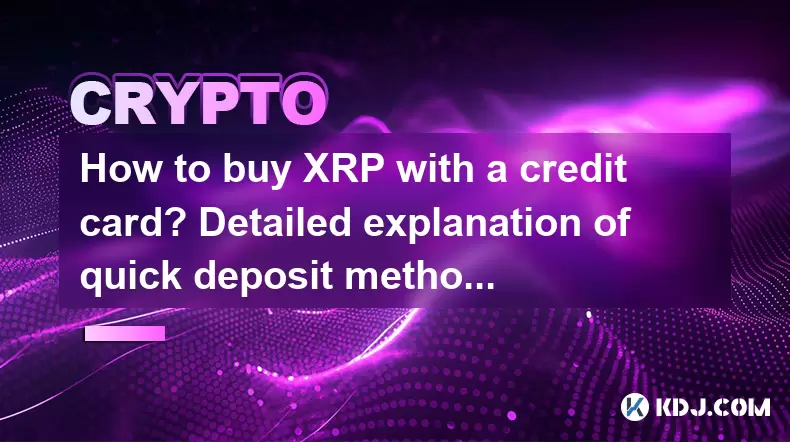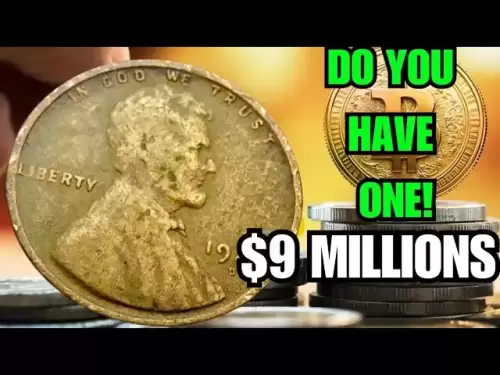-
 Bitcoin
Bitcoin $105,953.9980
3.06% -
 Ethereum
Ethereum $2,445.3292
6.68% -
 Tether USDt
Tether USDt $1.0006
-0.03% -
 XRP
XRP $2.1968
7.03% -
 BNB
BNB $643.2903
2.13% -
 Solana
Solana $144.2799
3.82% -
 USDC
USDC $1.0000
-0.03% -
 TRON
TRON $0.2739
0.49% -
 Dogecoin
Dogecoin $0.1642
4.47% -
 Cardano
Cardano $0.5834
5.49% -
 Hyperliquid
Hyperliquid $38.0741
2.80% -
 Sui
Sui $2.7741
7.56% -
 Chainlink
Chainlink $13.4107
11.26% -
 Bitcoin Cash
Bitcoin Cash $450.4828
-0.61% -
 UNUS SED LEO
UNUS SED LEO $9.1301
0.64% -
 Stellar
Stellar $0.2476
5.49% -
 Avalanche
Avalanche $18.0637
5.09% -
 Toncoin
Toncoin $2.9066
2.43% -
 Shiba Inu
Shiba Inu $0.0...01160
4.01% -
 Hedera
Hedera $0.1527
8.00% -
 Litecoin
Litecoin $84.6122
2.37% -
 Monero
Monero $317.6076
5.76% -
 Ethena USDe
Ethena USDe $1.0008
0.02% -
 Polkadot
Polkadot $3.4519
5.27% -
 Dai
Dai $1.0000
-0.03% -
 Bitget Token
Bitget Token $4.2835
5.62% -
 Uniswap
Uniswap $7.0443
9.78% -
 Pepe
Pepe $0.0...09964
7.41% -
 Pi
Pi $0.5391
4.64% -
 Aave
Aave $264.1743
11.26%
How to buy XRP with a credit card? Detailed explanation of quick deposit methods
To buy XRP swiftly with a credit card, choose a reliable exchange like Binance or Coinbase, deposit funds, purchase XRP, and consider transferring it to a personal wallet for security.
May 10, 2025 at 04:28 am

Purchasing XRP with a credit card can be an efficient way to enter the cryptocurrency market, especially for those who prefer the convenience and speed of credit card transactions. This article will guide you through the process, focusing on quick deposit methods to ensure you can buy XRP swiftly and securely.
Choosing a Reliable Exchange
The first step in buying XRP with a credit card is selecting a reliable cryptocurrency exchange that supports XRP trading and accepts credit card payments. Some of the most popular exchanges that meet these criteria include Binance, Coinbase, and Kraken.
- Binance is known for its wide range of cryptocurrencies and competitive fees.
- Coinbase offers a user-friendly interface and is particularly popular among beginners.
- Kraken is praised for its security features and advanced trading options.
When choosing an exchange, consider factors such as fees, security, user interface, and the specific cryptocurrencies available. Once you have selected an exchange, you will need to create an account.
Registering and Verifying Your Account
To register on the chosen exchange, you will need to provide some personal information, including your name, email address, and a strong password. After registering, you will need to verify your account to comply with Know Your Customer (KYC) regulations.
- Visit the exchange's website and click on the "Sign Up" or "Register" button.
- Fill in the required personal information and create a strong password.
- Check your email for a verification link and click on it to confirm your email address.
- Follow the prompts to complete the KYC verification process, which typically involves uploading a government-issued ID and a selfie.
Once your account is verified, you can proceed to deposit funds using your credit card.
Depositing Funds with a Credit Card
Depositing funds with a credit card is usually a quick process, but it may come with higher fees compared to other payment methods. Here's how to do it:
- Log in to your exchange account and navigate to the "Deposit" or "Funds" section.
- Select "Credit/Debit Card" as your payment method.
- Enter the amount you wish to deposit and your credit card details, including the card number, expiration date, and CVV code.
- Review the transaction details and any associated fees, then confirm the deposit.
The funds should be available in your exchange account almost instantly, allowing you to proceed with buying XRP.
Buying XRP on the Exchange
With funds in your exchange account, you can now purchase XRP. Here's how to do it:
- Navigate to the trading section of the exchange and search for the XRP trading pair (e.g., XRP/USDT or XRP/BTC).
- Enter the amount of XRP you want to buy and review the total cost.
- Confirm the transaction, and the XRP will be credited to your exchange wallet.
Some exchanges also offer a "Buy/Sell" section where you can directly purchase XRP with your deposited funds, which can be a quicker option for beginners.
Withdrawing XRP to a Personal Wallet
For added security, it's advisable to transfer your XRP to a personal wallet rather than leaving it on the exchange. Here's how to do it:
- Set up a personal XRP wallet, such as Toast Wallet or Exodus.
- Generate a new XRP address in your wallet and copy it.
- Return to the exchange and navigate to the "Withdraw" section.
- Enter the amount of XRP you want to withdraw and paste your wallet address.
- Review the transaction details and any associated fees, then confirm the withdrawal.
The XRP should arrive in your personal wallet within a few minutes, depending on the network congestion.
Frequently Asked Questions
Q: Are there any fees associated with buying XRP with a credit card?
A: Yes, there are typically fees associated with using a credit card to buy XRP. These can include a transaction fee charged by the exchange, as well as a fee from your credit card issuer. The exact fees vary depending on the exchange and the card issuer, so it's important to review these before proceeding.
Q: Can I use a debit card instead of a credit card to buy XRP?
A: Yes, many exchanges that accept credit cards also accept debit cards. The process for depositing funds and buying XRP is similar, but the fees and transaction limits may differ.
Q: Is it safe to buy XRP with a credit card?
A: Buying XRP with a credit card can be safe if you use a reputable exchange and follow best practices for securing your account, such as using strong passwords and enabling two-factor authentication. However, there is always a risk of fraud or unauthorized transactions, so it's important to monitor your credit card statements closely.
Q: How long does it take to buy XRP with a credit card?
A: The process of buying XRP with a credit card can be completed in a matter of minutes. Once you have deposited funds into your exchange account, you can typically purchase XRP instantly. However, the time it takes to set up and verify your account may add to the overall process.
Disclaimer:info@kdj.com
The information provided is not trading advice. kdj.com does not assume any responsibility for any investments made based on the information provided in this article. Cryptocurrencies are highly volatile and it is highly recommended that you invest with caution after thorough research!
If you believe that the content used on this website infringes your copyright, please contact us immediately (info@kdj.com) and we will delete it promptly.
- Crypto Liquidations Plummet: Time to Buy Today?
- 2025-06-25 08:25:12
- XRP Price Targets: Will XRP Hit $8?
- 2025-06-25 08:45:12
- Pi Pico W, One-Time Passwords, and Tokens: A Secure Combination
- 2025-06-25 08:25:12
- Crypto Altcoins in June 2025: Riding the Wave with Qubetics and Beyond
- 2025-06-25 08:45:12
- Altcoins, ROI, and Top Performers: Navigating the Crypto Landscape
- 2025-06-25 09:05:13
- Navigating the Crypto Seas: Bitcoin, Ethereum, DeFi, and Altcoins in a Volatile Market
- 2025-06-25 08:51:51
Related knowledge

How to customize USDT TRC20 mining fees? Flexible adjustment tutorial
Jun 13,2025 at 01:42am
Understanding USDT TRC20 Mining FeesMining fees on the TRON (TRC20) network are essential for processing transactions. Unlike Bitcoin or Ethereum, where miners directly validate transactions, TRON uses a delegated proof-of-stake (DPoS) mechanism. However, users still need to pay bandwidth and energy fees, which are collectively referred to as 'mining fe...

USDT TRC20 transaction is stuck? Solution summary
Jun 14,2025 at 11:15pm
Understanding USDT TRC20 TransactionsWhen users mention that a USDT TRC20 transaction is stuck, they typically refer to a situation where the transfer of Tether (USDT) on the TRON blockchain has not been confirmed for an extended period. This issue may arise due to various reasons such as network congestion, insufficient transaction fees, or wallet-rela...

How to cancel USDT TRC20 unconfirmed transactions? Operation guide
Jun 13,2025 at 11:01pm
Understanding USDT TRC20 Unconfirmed TransactionsWhen dealing with USDT TRC20 transactions, it’s crucial to understand what an unconfirmed transaction means. An unconfirmed transaction is one that has been broadcasted to the blockchain network but hasn’t yet been included in a block. This typically occurs due to low transaction fees or network congestio...

How to check USDT TRC20 balance? Introduction to multiple query methods
Jun 21,2025 at 02:42am
Understanding USDT TRC20 and Its ImportanceUSDT (Tether) is one of the most widely used stablecoins in the cryptocurrency market. It exists on multiple blockchain networks, including TRC20, which operates on the Tron (TRX) network. Checking your USDT TRC20 balance accurately is crucial for users who hold or transact with this asset. Whether you're sendi...

What to do if USDT TRC20 transfers are congested? Speed up trading skills
Jun 13,2025 at 09:56am
Understanding USDT TRC20 Transfer CongestionWhen transferring USDT TRC20, users may occasionally experience delays or congestion. This typically occurs due to network overload on the TRON blockchain, which hosts the TRC20 version of Tether. Unlike the ERC20 variant (which runs on Ethereum), TRC20 transactions are generally faster and cheaper, but during...

The relationship between USDT TRC20 and TRON chain: technical background analysis
Jun 12,2025 at 01:28pm
What is USDT TRC20?USDT TRC20 refers to the Tether (USDT) token issued on the TRON blockchain using the TRC-20 standard. Unlike the more commonly known ERC-20 version of USDT (which runs on Ethereum), the TRC-20 variant leverages the TRON network's infrastructure for faster and cheaper transactions. The emergence of this version came as part of Tether’s...

How to customize USDT TRC20 mining fees? Flexible adjustment tutorial
Jun 13,2025 at 01:42am
Understanding USDT TRC20 Mining FeesMining fees on the TRON (TRC20) network are essential for processing transactions. Unlike Bitcoin or Ethereum, where miners directly validate transactions, TRON uses a delegated proof-of-stake (DPoS) mechanism. However, users still need to pay bandwidth and energy fees, which are collectively referred to as 'mining fe...

USDT TRC20 transaction is stuck? Solution summary
Jun 14,2025 at 11:15pm
Understanding USDT TRC20 TransactionsWhen users mention that a USDT TRC20 transaction is stuck, they typically refer to a situation where the transfer of Tether (USDT) on the TRON blockchain has not been confirmed for an extended period. This issue may arise due to various reasons such as network congestion, insufficient transaction fees, or wallet-rela...

How to cancel USDT TRC20 unconfirmed transactions? Operation guide
Jun 13,2025 at 11:01pm
Understanding USDT TRC20 Unconfirmed TransactionsWhen dealing with USDT TRC20 transactions, it’s crucial to understand what an unconfirmed transaction means. An unconfirmed transaction is one that has been broadcasted to the blockchain network but hasn’t yet been included in a block. This typically occurs due to low transaction fees or network congestio...

How to check USDT TRC20 balance? Introduction to multiple query methods
Jun 21,2025 at 02:42am
Understanding USDT TRC20 and Its ImportanceUSDT (Tether) is one of the most widely used stablecoins in the cryptocurrency market. It exists on multiple blockchain networks, including TRC20, which operates on the Tron (TRX) network. Checking your USDT TRC20 balance accurately is crucial for users who hold or transact with this asset. Whether you're sendi...

What to do if USDT TRC20 transfers are congested? Speed up trading skills
Jun 13,2025 at 09:56am
Understanding USDT TRC20 Transfer CongestionWhen transferring USDT TRC20, users may occasionally experience delays or congestion. This typically occurs due to network overload on the TRON blockchain, which hosts the TRC20 version of Tether. Unlike the ERC20 variant (which runs on Ethereum), TRC20 transactions are generally faster and cheaper, but during...

The relationship between USDT TRC20 and TRON chain: technical background analysis
Jun 12,2025 at 01:28pm
What is USDT TRC20?USDT TRC20 refers to the Tether (USDT) token issued on the TRON blockchain using the TRC-20 standard. Unlike the more commonly known ERC-20 version of USDT (which runs on Ethereum), the TRC-20 variant leverages the TRON network's infrastructure for faster and cheaper transactions. The emergence of this version came as part of Tether’s...
See all articles
























































































